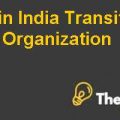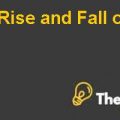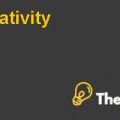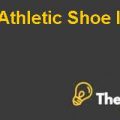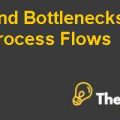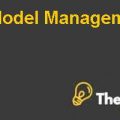Introduction
Aurolab began in 1992as a non-profit house producer of intraocular lenses for use in the Aravind Eye Care Hospital. The hospital is the largest customer of Aurolab. However, besides Aravind the customer base of Aurolab increased and now includes International customers.
In order to make intraocular lenses available to poor patients with weakeyesight,Aurolab was developed under the leadership of Dr. Govindappa Venkataswamy to operate poor patients for cataract surgery at affordable prices. Previously, these lenses were imported from the United States of America and Western Europe. However, the price was too high for Indians to afford it. It costs $200 per piece.
With Aravind as its largest buyer and the lower price ($10 per piece) at which it sells, it allows Aurolab to grow substantially over the years. Aurolab has developed a large customer base due to its affordable prices, high-technological products and high quality. Besides India, it has its customers around the world. Now, it has divisions, including Intramuscular Lens division, Surtle Needle Division, Pharmaceutical division, Blades division and its laser project.
Problem Statement
With the death of Dr.V at 88, senior managers, Bala and Sriram, began taking control of the affairs of Aurolab. They aimed to run the organization in a way that is consistent with the vision of Dr.V. With the change in market conditions, Aurolab is forced to think about the strategies of the future.
Different trustees on the board have a different opinion about the way to progress. Three alternatives were suggested including innovation, geographic search, and diversification. The suggestion includes that Aurolab should look at innovation as its core strategy and only the way to develop products. It was also questioned whether there is a need to increase presence in developing countries where the growth of ophthalmic activity is very high. Finally, it was argued whether the strategy of diversifying away into other markets to sell its products would be consistent with its core objective because entrance into other health disciplines may affect the ophthalmic product line and its objective of making eye care affordable.
Organic Growth
The product of Aurolab was Intraocular Lenses (IOLs). Aurolab was able to manufacture these lenses at lower costs as compared to their counterparts in the United States of America and the European markets. The lower distribution and the manufacturing costs allowed it to sell these lenses at $10-$12. Starting with 35,000 high quality lenses, it had the potential to sell these lenses at $4 per piece. Aurolab was able to keep itself up to date in technology and sell new types of lenses such as hydrophilic and hydrophobic lenses at a price of about $20 to $40 as compared to U.S which sold them at $100 to $125 per piece.
In 1998, it started its suture needle division with the help of Seva Foundation and Green while obtaining the technology from Germany. The aim of the division is to manufacture sutures at low costs as compared to U.S and other competitors. In 2006, when the ophthalmic suture market began declining due to changes in surgical techniques, it moved towards the development of micro-sutures for plastic, hand and cardiovascular structures.
In 1997, it began its Pharmaceutical division with the aim of providing specialty drugs, imported drugs and orphan drugs at affordable prices. It took the assistance from Moor fields Eye Hospital in England through its chief pharmacist. Then, it began manufacturing them itself. By 2006, it was able to manufacture more than 50 drugs under Indian and International drugs. It also obtained WHO- GMO certification for all ophthalmic drugs and the European Union’s CE mark on several major products. In 2005, it came up with blades division to meet the demand of blades at Aravind hospital new small incision IOL surgical techniques.
Competitive Structure
The industry of IOL manufacturers has changed over the years. In 2006, there were many manufacturers in India. However, four of these manufacturers had achieved the CE mark due to high quality lenses they were producing. In the Indian market, Aurolab, Appasamy and IOCare are the strongest players in the industry.
Appasamy had a diverse range of products including ophthalmic products, surgical instruments, diagnostic and surgical instruments, pharmaceuticals, IOLs and other surgical consumables. IOCare manufactures IOLs and contact lenses have diversified into the business of selling and buying equipment and pharmaceuticals. The NGO sector, the private sector and the government sector account for 40%, 35%, and 25% of the demand for IOL lenses. Aurolab has 15% of the market while Appasamy and IOCare have 30% and 25% market share respectively.Imported products also cover 10% market....................
This is just a sample partial case solution. Please place the order on the website to order your own originally done case solution.

